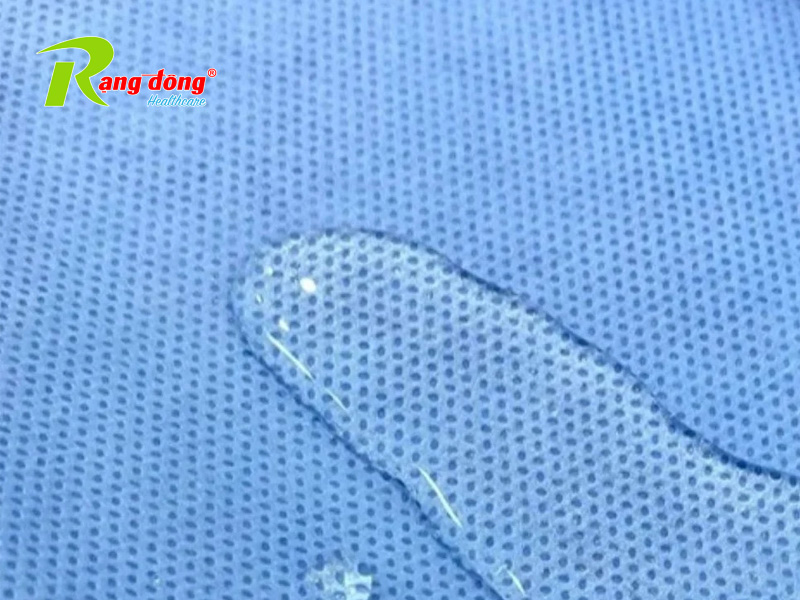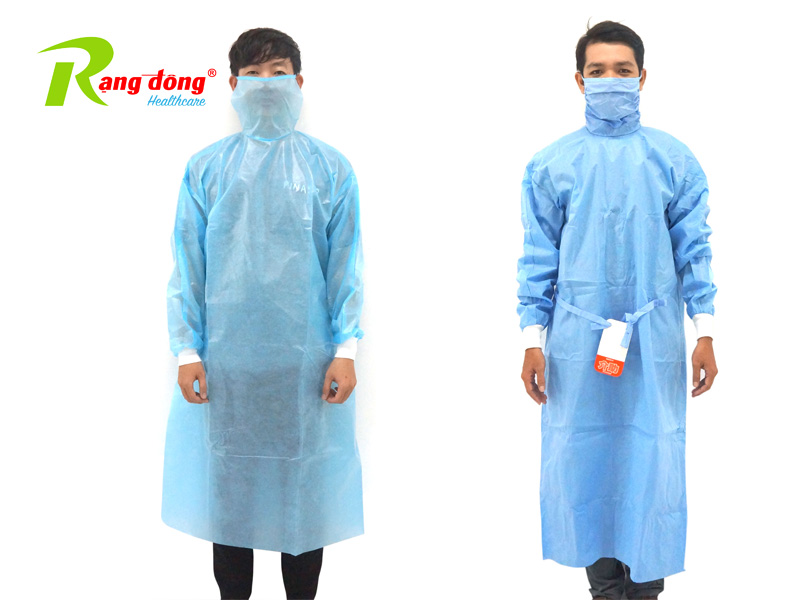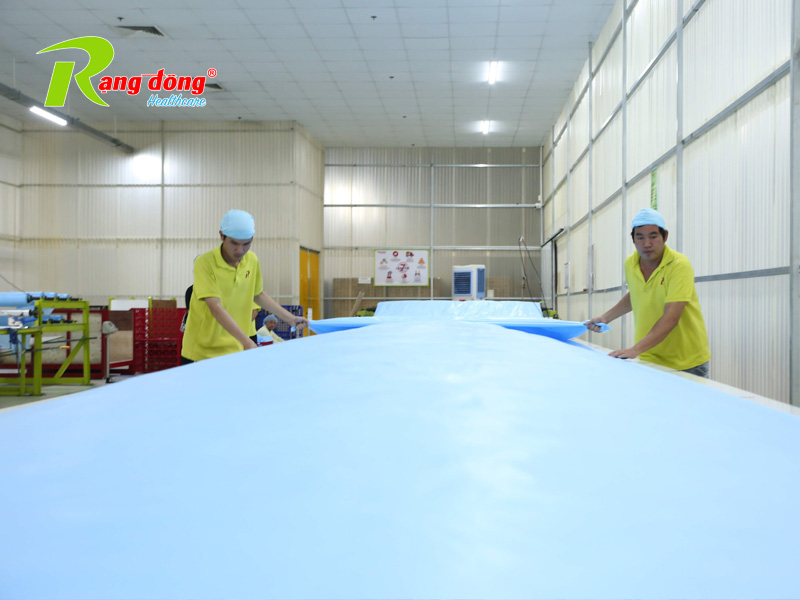Advantages of SMMS non-woven fabric in medical production Product information 16/05/2023
Rang Dong Healthcare Company is a manufacturing and supply company of medical products, including SMMS non-woven fabric. SMMS non-woven fabric is a type of fabric produced by bonding synthetic or natural fibers together without weaving or knitting. SMMS is an abbreviation for the components in the structure of this fabric, including Spunbond, Meltblown, Meltblown, and Spunbond, corresponding to the layers of fabric bonded together.

SMMS non-woven fabric usually has high durability, excellent waterproof capability, and features antibacterial, antiviral properties. Therefore, it is widely used in medical applications, electronics manufacturing, industrial sectors, and households.
Structure and components of SMMS non-woven fabric
The structure of SMMS non-woven fabric includes Spunbond, Meltblown, Meltblown, and Spunbond layers.
- Spunbond Layer: This is the outermost layer of SMMS non-woven fabric, created by passing synthetic or natural fibers through a process of drawing and laying them flat. This layer has waterproof, high durability, and stretch resistance.
- Meltblown Layer: This is the central layer of SMMS non-woven fabric, created by passing thin fibers through a melting process, then pushing them out to form microfibers. This layer features dust resistance, antibacterial, and antiviral properties.
- Meltblown Layer: This is the second layer of SMMS non-woven fabric, created by passing thin fibers through a melting process similar to the central Meltblown layer. This layer also has dust resistance, antibacterial, and antiviral properties.
- Spunbond Layer: This is the last layer of SMMS non-woven fabric, similar to the outer Spunbond layer, created by passing synthetic or natural fibers through a process of drawing and laying them flat. This layer has waterproof, high durability, and stretch resistance.
The fiber layers in SMMS non-woven fabric are usually bonded together through heat or chemical methods to create a complete fabric structure. The composition of SMMS non-woven fabric depends on the type of fiber and manufacturing technology used but typically includes components such as polypropylene (PP), polyester (PET), viscose, or cotton.
Advantages of SMMS non-woven fabric

- Excellent Waterproof Capability: Better waterproof capability compared to other non-woven fabrics due to the combination of Spunbond and Meltblown layers.
- Dust Resistance, Antibacterial, and Antiviral Properties: With the Meltblown layer, SMMS non-woven fabric has good dust resistance, antibacterial, and antiviral properties, preventing the spread of bacteria and viruses.
- High Durability: High durability, resistance to abrasion, and good stretch resistance, not prone to tearing or breaking.
- Easy to Use: Elasticity, easy to cut and sew, suitable for the production of consistent and diverse-sized products.
- Health Safety: Made from health-safe fibers, causing no allergies and free from harmful chemicals.
- Cost-Effective: Reasonable cost, especially when produced on a large scale.
Applications of SMMS non-woven fabric
Rang Dong Healthcare Company aims for “community health” as its operating criterion and development platform. The company boldly invests in modern equipment and technology to produce medical plastic products that meet international standards, exported to the US and Europe. Some applications of SMMS non-woven fabric include:
- Medical Supplies Manufacturing: Production of medical products such as masks, surgical gowns, diapers, and infusion tubes. With its dust resistance, antibacterial, and antiviral properties, SMMS non-woven fabric helps protect the health of users.
- Hygiene Product Manufacturing: Production of hygiene products such as tissue paper, sanitary napkins, and wet wipes. With excellent waterproof capability, SMMS non-woven fabric makes hygiene products more convenient and effective.
- Industrial Product Manufacturing: Production of industrial products such as laundry bags, filters, and floor liners. With high durability, SMMS non-woven fabric enhances the strength and stability of these products.
- Household Product Manufacturing: Production of household products such as mattresses, pillows, and tablecloths. With excellent waterproof capability, SMMS non-woven fabric protects household items from dirt and moisture.
- Electronic Product Manufacturing: Production of electronic products such as wiring conduits and EMI shields. With good dust resistance and antibacterial properties, it helps protect electronic devices from dust and bacteria.
SMMS non-woven fabric has many advantages, including excellent waterproof capability, dust resistance, antibacterial, and antiviral properties, high durability, and stability. These advantages make SMMS non-woven fabric suitable for various applications, especially in the medical and industrial fields. With its diverse features and benefits, SMMS non-woven fabric is becoming a widely used and highly regarded product in the market by manufacturers and consumers alike.

The future prospects and development potential of SMMS non-woven fabric are significant, especially in the medical and industrial sectors. It is expected that in the future, the demand for SMMS non-woven fabric will increase due to its advantages such as good dust resistance, antibacterial, and antiviral properties, high durability, and stability.
With the advancement of production techniques, the technology of SMMS non-woven fabric will be improved, enhancing its features. Manufacturers will be able to produce SMMS non-woven fabric with better quality, more diverse colors, and meet consumer demands.
In the medical field, the demand for SMMS non-woven fabric will likely increase due to disease outbreaks and the need to protect human health. In the industrial sector, SMMS non-woven fabric is used to produce more convenient and efficient products. Therefore, the development potential of SMMS non-woven fabric is significant in the future and may become a good choice for manufacturers and consumers.






